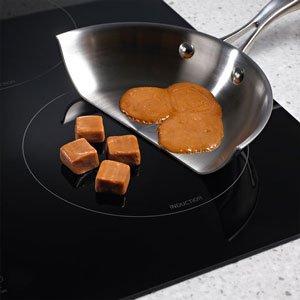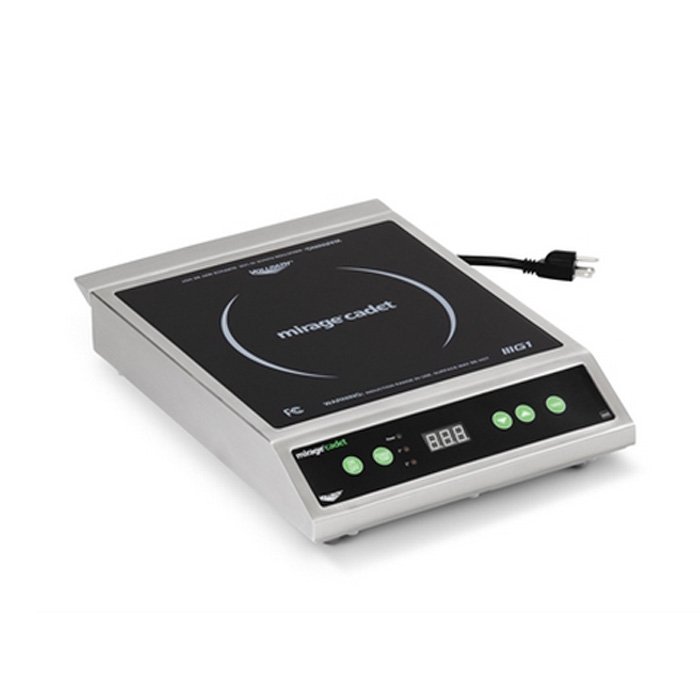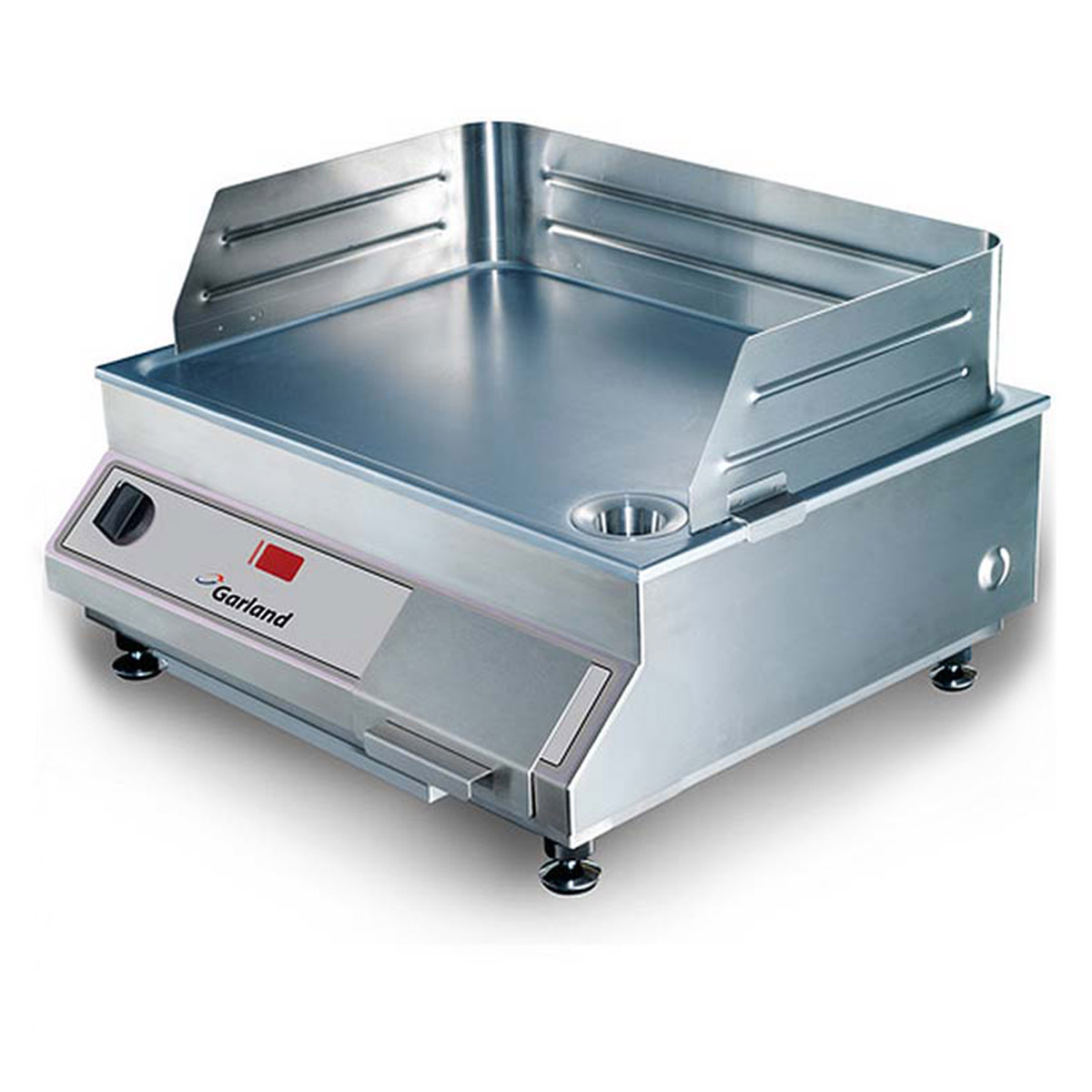The Pros & Cons of Induction Cooking Technology
One of the buzz-phrases you will probably come across as you shop for restaurant equipment is “induction technology.” At first glance, it is easy to dismiss this as another flash in the pan kitchen gadgetry...
One of the buzz-phrases you will probably come across as you shop for restaurant equipment is “induction technology.” At first glance, it is easy to dismiss this as another flash in the pan kitchen gadgetry like the motorized ice cream cone, banana holder, or salad shooter, but this is certainly not the case. Induction technology, which is different from the similar sounding convection technology, has a rich history and is currently gaining rapid acceptance in the marketplace.
A Brief History
Experiments involving induction technology go all the way back to the 1890s, with the first patents for the technology appearing in the early 1900s. Demonstration stoves with induction technology were exhibited by the Frigidaire company all the way back in 1950s and induction stoves were introduced to consumers 20 years later. However, due to the price, the induction stovetop failed to gain a foothold and would temporarily disappear from the US marketplace.
While induction technology initially failed to gain acceptance in the US, it gained popularity in Europe and Asia where its benefits meshed with the demands of living in densely populated cities. But with the recent emphasis on “going green”, induction technology has made a reappearance in the US. Today, many major appliance manufacturers offer induction technology. The reintroduction of induction technology has gone far beyond home appliances- many manufacturers of commercial equipment, like Garland and Vollrath, have also started to offer induction technology in their product lineups.
Vollrath 59300 - Mirage Cadet Countertop Induction Range 1800W
Quick. Convenient. Cost Effective. Safe.
Check it outWhat Is Induction?
Without expounding too much on the science and physics of it all ('cause who likes physics, right?) induction technology allows you to heat a cooking vessel with an electromagnetic field rather than through radiant heat (like a flame or hot electric coil).
Inside every induction cooktop, you will find an electric coil (different from a hot electric coil found on stovetops). When an AC current flows through this coil, an electromagnetic field is produced. This magnetic field then excites the molecules in your cookware. As the molecules are excited by the electromagnetic field, heat is produced. The amazing thing about this entire process is that the cookware itself becomes the heat source!
Pros
One of the biggest benefits of induction cooking is efficiency. With a gas or electric range, the energy consumed has to be converted into heat before being directed at the cooking vessel. It is estimated that only about 50-60% of the energy consumed in a gas or electric range gets used for actual cooking compared to 80-90% for an induction range. To help you visualize this concept, imagine a gas or electric stove as a campfire. Much like a campfire, a gas or electric stove will give off heat in many directions, resulting in hot spots, cold spots, and waste. While there are means that one can use to help direct the heat in a more efficient manner, there will always be waste. This is in contrast to an induction range which operates much like a magnifying glass in the sun. A magnifying glass can harness the energy of the sun and concentrate it into an intense beam, which is capable of getting so hot that it can burn ants (remember those fun times on the playground?). An induction cooktop operates in a similar manner where energy is directed right at your cookware.
Another benefit of of induction technology is the ability to make instant and precise temperature adjustments. The temperatures in an induction stove will respond instantly when you turn the knob allowing you great control. Also, induction stoves have great control over temperatures, even at low temperatures which are required for many sauces and confections.
A third benefit of an induction cooktop is its ability to heat quickly. For example, a gallon and a half of water takes around 13.75 minutes to come to a boil with a gas range, but an induction range brings the same amount to a boil in as little as 8.5 minutes. This ability to heat quickly means you can reduce your overall cooking time tremendously.
A fourth benefit of induction technology is that your stovetop and kitchen stays cooler. You probably know how it feels to sweat it out in the kitchen, making your favorite dish. The reason for this is that over half the energy in a gas or electric stove is wasted. Much of the radiant heat from your stove does not find its way to your pot or pan, but rather to the surrounding cooktop and air. This means more wasted energy as your air conditioning and refrigeration units work overtime to combat the heat that your stovetop gives off. But with an induction cooktop, the heat is concentrated in your pot or pan. This means there is less heat being radiated to the surrounding areas, which means big cost savings due to reduced energy use.
 There is also a safety advantage
with the heat being concentrated in your pot or pan. Since an induction
cooktop does not put off radiant heat, the surrounding cooktop stays cool
enough that your fingers won’t get burned, and accidental drips won’t be
baked onto your cooking surface.
There is also a safety advantage
with the heat being concentrated in your pot or pan. Since an induction
cooktop does not put off radiant heat, the surrounding cooktop stays cool
enough that your fingers won’t get burned, and accidental drips won’t be
baked onto your cooking surface.
In the video below, Chef David Ash from Zink Marketing explains and demonstrates the benefits of an induction range:
Garland GI-BH/BA 2500 2.5 kW Induction Cooker
The GI-BH/BA 2500 is precise, powerful, and produces very quick results.
Check it outCons
The biggest negative of induction technology is cost. Even with the decline of prices due to the rising popularity of induction technology, an induction cooktop still costs more than a typical gas or electric cooktop. However, it is important to consider that cost might not be everything. There are numerous advantages to using induction technology, such as efficiency and the ability to heat quickly and safely, that are not found with traditional gas or electric equipment.
A second downside of induction technology is the necessity of induction compatible cookware. If your collection of cookware consists of only aluminum or copper pans, you will have to purchase new cookware, or an induction disk, if you make the switch to induction. Aluminum and copper do not contain enough iron for them to react properly to the magnetic field that an induction cooktop produces.
 With the rise of induction
technology, manufacturers have made it easier to identify if their products
are compatible with induction cooktops. When shopping you can look for the
unique induction-compatible logo.
With the rise of induction
technology, manufacturers have made it easier to identify if their products
are compatible with induction cooktops. When shopping you can look for the
unique induction-compatible logo.
Another way to determine if cookware is compatible with an electric cooktop is to perform the magnet test. All you have to do is to take a typical magnet and attempt to stick it to your pot or pan. If a magnet adheres to your pot or pan, then it will work on an induction cooktop.
A third disadvantage of using induction technology is noise. The magnetic field that is created through induction technology is silent, but the electronics which facilitate the process do produce noise. A buzz or a hum from the electronics are commonly found in almost all cooktops. Additionally, you might be faced with having to deal with noise from loose parts on your cookware. A loose handle or lightweight lid can potentially vibrate on an induction cooktop as it reacts with the electromagnetic field and cause a rattling noise.
Other Considerations
If you are considering the switch to induction cooking, you should also think about the need for electricity. While manufacturers do make cooktops that utilize a typical 120 volt outlet, many models require 208-240 volts. This means that you need to plan out the electrical configuration in your kitchen carefully.
Lastly, when switching to induction technology, consider the need to change recipes and to retrain your staff. For example, since induction cooktops heat much more quickly and consistently, you can no longer expect to be able to step away from your stove for a minute to chop the last few ingredients of your dish. If you do, your pan might be too hot and scorch your food! So as you think about induction cooking, remember there will be a learning curve if you make the switch.
Conclusion
Purchasing a new cooktop is certainly a big decision. As you go through this process, make sure to check out all of our induction cooktops from Garland and Vollrath. The Garland GI-SH/GR5000 is especially worth a look as Garland has incorporated induction technology in a griddle!
Garland GI-SH/GR 5000 Induction Griddle
Induction cooking technology, fast recovery times, high energy efficiency, and precise temperature control.
Check it outFeel free to contact us if you have questions or if you need further guidance in finding the best cooktop option for you!






